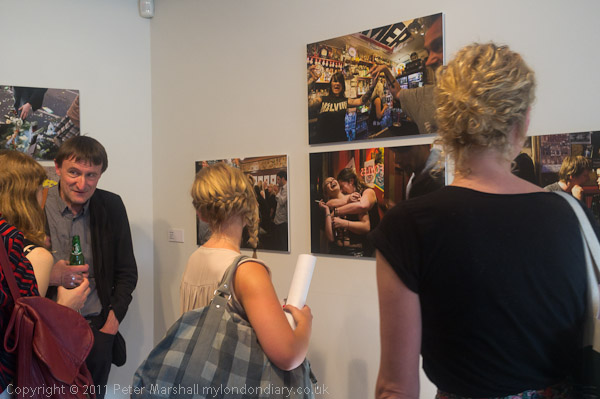The London Street Photography Festival is billed to be in July and includes some interesting events, including a show of pictures by Vivian Maier, the Chicago nanny who only became famous after her death in 2009 and who I wrote about here last December. My thoughts about her work then included:
Interesting though her work is, it does not appear to have been innovative, and has long lost any ability to alter the course of our medium. At best it can retrospectively broaden and enrich its history.
The show at the German Gymnasium from 1-24 July (entry £3.50) includes 48 black and white and colour prints and “a selection of her fascinating silent films” about which I know nothing. A talk on her by John Maloof, one of those who discovered her work, has already sold out, and other events in the LSPF are also likely to be popular – this really seems to be the year for street photography.
The big exhibition in London remains ‘London Street Photography‘ at the Museum of London which opened in February and continues until 4 September 2011. In its first week people were queuing for more than an hour to see it, and museum attendances were I think around ten times those at the same period the previous year. With such a long run it isn’t crowded now, but still attracting a decent audience.

Photofusion kicked off the festival early with On Street Photography: A Woman’s Perspective which opened on 10 June and continues until 22 July with pictures by Anahita Avalos, Polly Braden, Tiffany Jones, Johanna Neurath and Ying Tang, the three London-based photographers with pictures from London, pictures from Mexico by Tehran-born Avalos (who now lives in Paris) and pictures from Shanghai by Ying Tang now living in Germany.


The work on the wall is by Ying Tang
I spent some time at the opening in pedant mode wondering whether that should have been ‘Five Women’s Perspectives‘, as the photographers have little in common, and rather more time wondering whether ‘Five Perspectives by Women‘ would have been more accurate still. But in the end what is important is whether the pictures are worth looking at.
It doesn’t even matter if much of the work in this – and the Museum of London show – is not really what I would consider street photography, although at least The London Street Photography Festival (unlike the museum show which hedges its bets by quoting several) does have a working definition which Photofusion quotes:
un-posed, un-staged photography which captures, explores or questions contemporary society and the relationships between individuals and their surroundings.

Pictures at left by Johanna Neurath and at right by Tiffany Jones
The work that interested me most was something that I would probably call a documentary project rather than street photography by Tiffany Jones, a Canadian who lives in London and has photographed for a couple of years in a particular London bar.
The pictures are largely an upfront look at the relationships between people and the gestures that show these, and they also illustrate the advantages of digital photography in working in low and mixed light situations. Until recently, work like this would almost certainly have been in gritty black and white (as for example in Cafe Lehmitz by Anders Petersen in Hamburg in the late 1960s – one of the photographers Tiffany and I talked about at the opening) and the differences that this creates are interesting.

Tiffany Jones

Many of London’s street photographers were around but not taking pictures
More pictures from the opening on My London Diary.
The event was also an opportunity for me to try out my new toy, the Fuji X100, which might almost be an ideal camera for street photography (if only it had been a 28mm f2 equivalent instead of the 35mm.) I’m still having problems sorting out the different views and so on, and I missed a few pictures, but the camera coped pretty well with extremes of contrast and some very different light levels in different areas of the gallery. Hints are emerging on the web of the first firmware update that will deal with a few little annoying glitches too – like the difficulty at times in getting it to wake up when it has gone to sleep.
I’m still finding it hard to force myself to spend around £70 on getting a lens hood, but it really is essential, not for preventing light shining on the lens but for keeping fingers out of it. Fingerprints on the lens gave a few of these shots rather more flare than I would like. I’m hoping China will come up with a cheap alternative via e-Bay for this, or at least for the metal ring that includes a filter thread. Rather than the expensive Fuji machined aluminium hood I’d quite like to fit a cheap flexible rubber one, as these avoid both vibration and reflections when shooting though windows and cost less than a fiver.